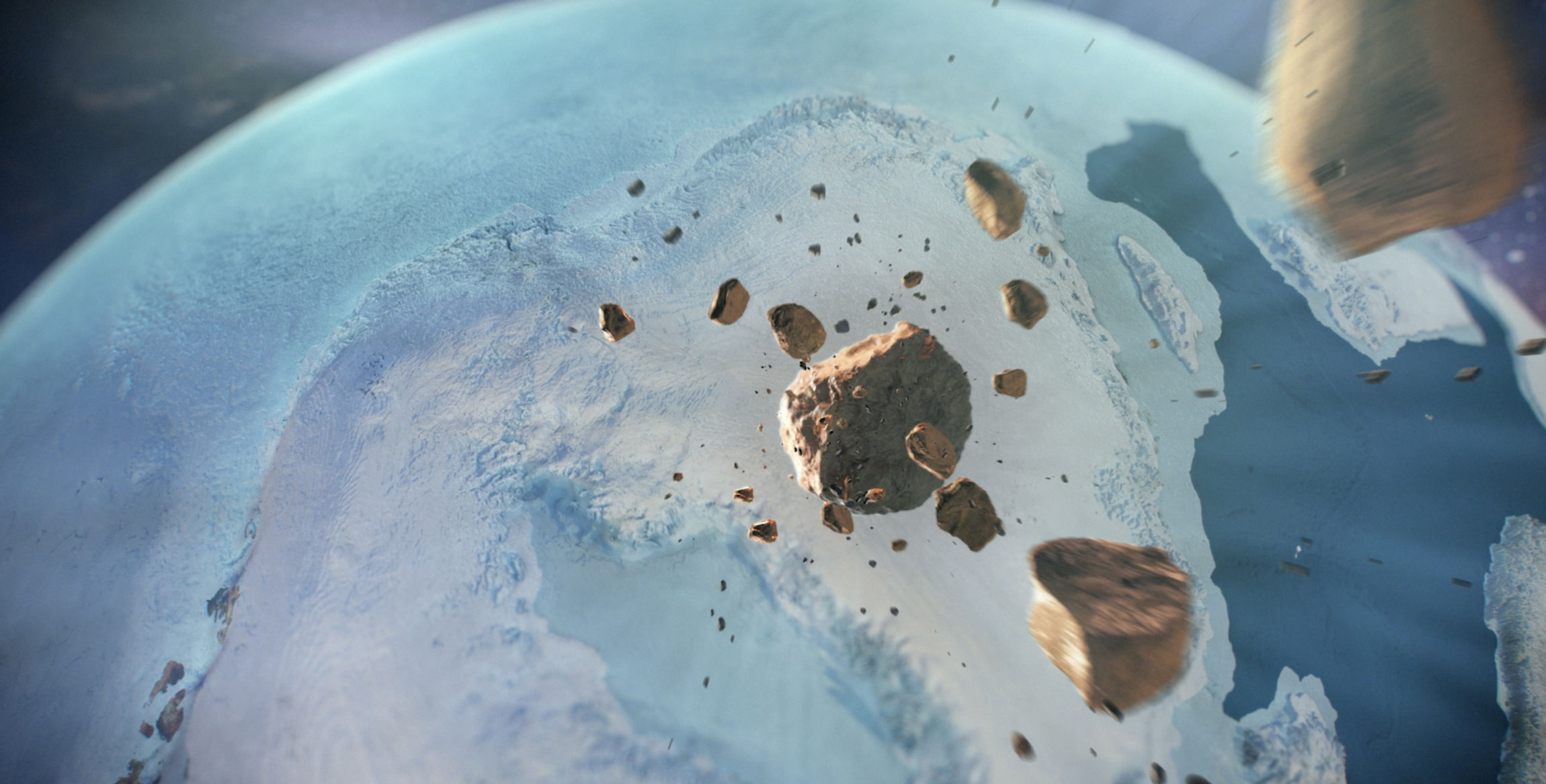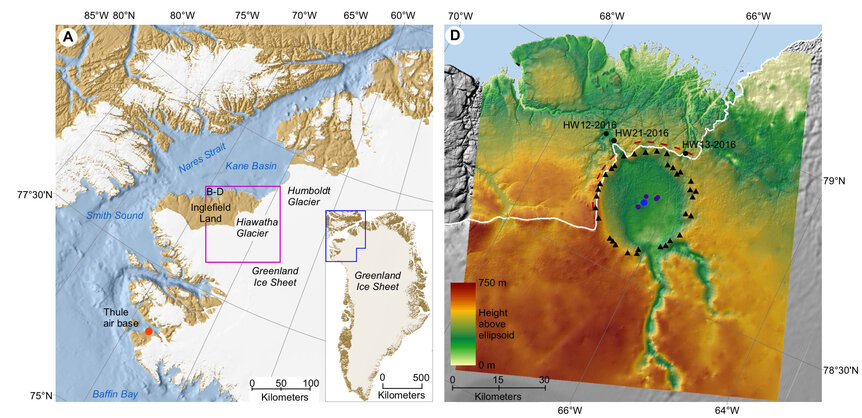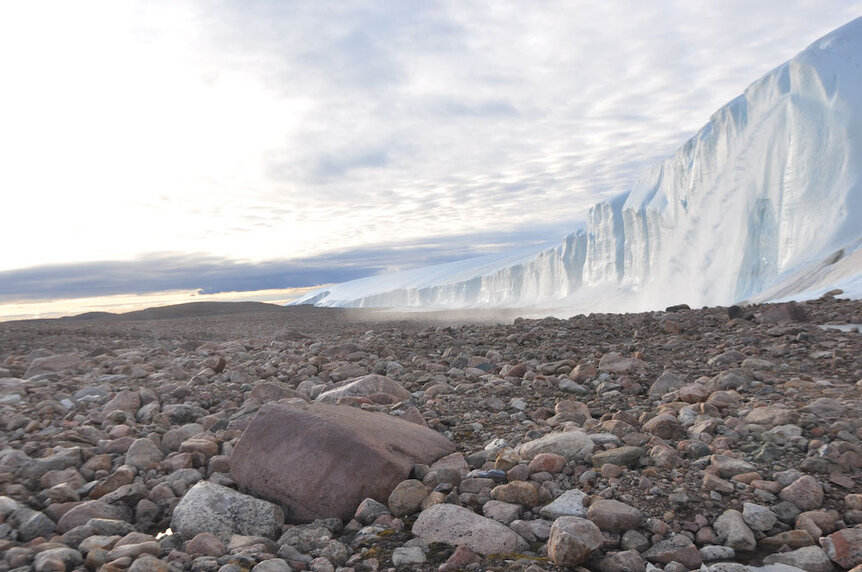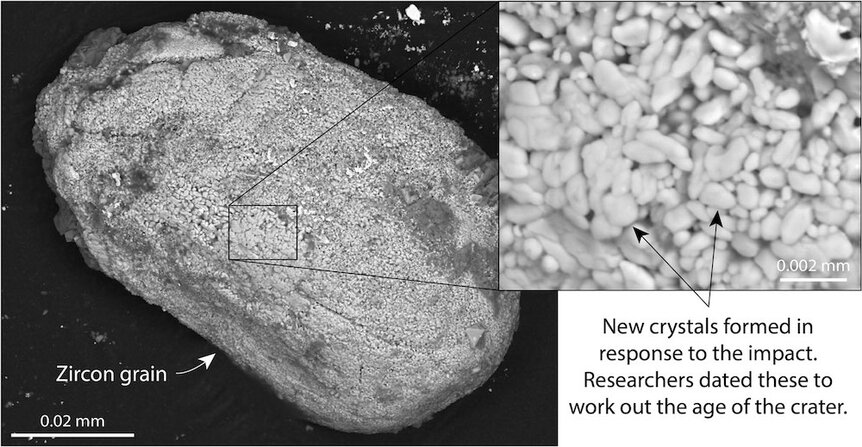Create a free profile to get unlimited access to exclusive videos, sweepstakes, and more!
UPDATE: So, about that 'young' asteroid impact crater in Greenland... it's actually old. Really old.
Huge crater under the ice is 60 million years old.

Some time in the past, an asteroid a kilometer across slammed down into Greenland at a speed at least a dozen times faster than a rifle bullet. Releasing as much energy as 15,000 times the largest nuclear weapon ever exploded on Earth, it carved out a gigantic crater now called Hiawatha Crater, and it's over 30 kilometers across.
This much is known. The big question is, when did this happen?
Initial evidence suggested it wasn't all that long ago, no more than a few million years, and possibly as recent as 12,000 years ago! Controversy ensued, including the (fairly unlikely) idea that this impact may have caused the collapse of some Paleoamerican people's civilizations.
But new research just published shows that isn't the case at all [link to paper]. The date the scientists get for the impact is substantially older, 58 million years ago, long before any humans at all strode the planet, and less than 10 million years after the much larger impact that wiped out the non-avian dinosaurs.
The crater was discovered using airborne radar mapping, which bounces radio waves off Earth's surface and back up to a receiver. This kind of radar penetrates through the ice that covers Greenland, and can be used to map the topography of the rock below. Scientists found the huge bowl-shaped depression in the ground under the ice, and follow-up observations confirmed its existence, including a raised rim and central peaks — large hills or mountains created in the middle of a crater after the initial immense pressure of the impact subsides, and material in the floor rebounds upward.
The age of the crater is a different question. The original research used indirect evidence to get an upper limit to the age by looking at the structure of ice in and around the crater, judging it to be young. As I pointed out when I wrote about this at the time, the evidence of the age was circumstantial and there was evidence against a young age, too. I was skeptical.
What's needed, though, is direct evidence. The new research looked further into the geophysical evidence of the age of the crater, and the results diverge considerably from the original work.
There are a few places where there's clear evidence of glacial melting causing outflow of water from the crater. The crater is still under ice, but just to the northeast the glacier ends, and water from melting has carried sediment away from the crater out into the open. The scientists collected mineral samples about 10 kilometers away from the edge of the crater.
They found grains of zircon, a very tough and erosion-resistant mineral, some of which was intact, while others showed clear signs of the kind of crystal deformation that can happen under the immense shock-wave pressure of an impact. They used radioactive dating — the rate at which uranium slowly decays to lead over time — to get the ages of these samples. Crystals that did not show this shock pattern were very old, nearly two billion years, and are most likely from the local bedrock.
The shocked zircon, though, was dated to be 58 million years old. They also looked at dozens of sand grains that also showed shocked features, and using a similar dating technique — called 40Ar/39Ar or argon-argon dating — got a consistent age of around 60 million years.
This puts the impact date in the Late Paleocene Epoch, long before Greenland was under an ice sheet. That would resolve one very big issue I had with the original, much younger date: No evidence of an impact was found in the ice itself, no dust or any other sort of material you'd expect from such a huge event. That's a serious problem for a young impact, but none at all if the impact predated Greenland's glaciation.
There are some interesting geological events that happened around 60 million years ago, such as a global temperature minimum, when carbon from the atmosphere was sequestered in peat bogs and permafrost; right around that time there was an uptick in atmospheric carbon that started a warming trend. But there's no evidence the impact was related to that. The crater is large on a human scale but small on a global one, and the impact probably wasn't enough to have a planet-wide effect.
I noted in my original article that there's a sketchy claim that the North American Clovis people were wiped out 12,900 years ago by some sort of astronomical event like an impact. The evidence for this is very shaky, and most mainstream scientists are extremely skeptical of it, to put it mildly. The original minimum Hiawatha Crater impact age of 13,000 or so years breathed some new life into the idea, but now I think it's safe to shelve it once again.
And of course, that's science. It's a method for testing hypotheses and learning from the results, and no claim is so solid that it shouldn't be tested. In this case it looks like initial evidence of youth has been replaced by much better evidence of great age. And either way this adds to the small number of impact craters known on Earth, and helps us understand both the threat of impacts and how Earth responds to them. That's all good.





























